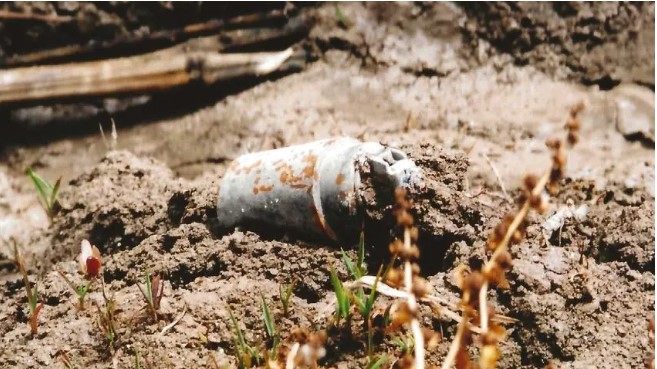Essential Guide to MyFitnessPal Premium
June 8, 2025

President Joe Biden’s recent decision to transfer U.S. cluster munitions to Ukraine will exacerbate a humanitarian crisis and break with a widely followed international norm. The move encourages the proliferation of weapons that have been banned by over 120 countries because they endanger civilians both during strikes and for months, years, and even decades afterward. Having witnessed the gruesome impact of cluster munitions first-hand, I find the U.S. rationale for transferring them weak on multiple fronts.
Cluster munitions, which Russia has used extensively in Ukraine, disperse dozens or hundreds of smaller submunitions, or bomblets, across a broad area, the size of a city block. Each of these submunitions shatters into metal fragments that can tear off limbs and inflict fatal wounds. They cause civilian casualties at the time of attack because they cannot discriminate between soldiers and civilians. In addition, many do not explode on impact, lingering like landmines and posing an ongoing threat to the local population.
In news conferences on July 7, U.S. government officials justified the transfer of artillery projectiles containing cluster submunitions known as Dual Purpose Improved Conventional Munitions (DPICM) on several grounds. National Security Advisor Jake Sullivan and Undersecretary of Defense for Policy Colin Kahl contended that Ukraine already faces a massive challenge to clear unexploded ordnance, that technological and targeting safeguards will reduce risks, and that Ukraine needs more ammunition to defeat Russian forces.
These arguments, however, do not heed the lessons of earlier use of such submunitions by the U.S. and other countries that illuminate the dangers of deploying cluster munitions to the battlefield. Listening to White House and Pentagon spokespersons brought to mind interviews, images, and evidence from my field research with Human Rights Watch, which illustrate why this transfer is profoundly troubling.
While acknowledging that cluster munitions harm civilians, U.S. officials argued that using them will not significantly worsen the situation in Ukraine because the country already has to clear large numbers of Russian munitions, including submunitions and landmines. In addition, Ukraine has pledged to record where they use the weapons, and the U.S. has committed to support clearance efforts.
Get updates on human rights issues from around the globe. Join our movement today. Have it sent to your inbox.
This reasoning ignores the threats to individual civilians waiting for their land to be cleared. Every unexploded submunition endangers a curious child, a farmer plowing a field, or a refugee returning home. The submunitions’ presence also slows reconstruction.
Children are the most common victims, as my Human Rights Watch colleagues and I found in Iraq in 2003. There, the U.S. widely used cluster munitions containing DPICM submunitions, including M42 and M46 submunitions for artillery projectiles, and M77 submunitions for rockets.
“Cluster bombs sometimes look like beautiful things,” a doctor at Iraq’s Najaf Teaching Hospital explained to us at the time. “Children like to play with them. [They] are here and there, everywhere on farmland.” Twelve-year-old Abbas Hussain, who was at that hospital, picked a submunition up on a road, thinking it was a toy, but it exploded and ripped off half of his hand.
DPICM submunitions are particularly attractive to children because they resemble a bell with a loop of ribbon at the end. “It’s nice for carrying,” one U.S. military officer told me in Baghdad, describing the threat to children. In Ditsi, Georgia, in October 2008, I interviewed Omar Mindiashvili, a displaced person who had recently returned home. He caught his 13-year-old daughter, Salome, swinging a Georgia-fired M85 submunition, which she had found on the roof of their porch, by its ribbon. Fortunately, he recognized the danger from a “risk education” TV advertisement and stopped her before it detonated.
Rami Ali Hassan Shebli was not as lucky. In October 2006, the 12-year-old boy picked up a strange object in a field near his village of Halta, in south Lebanon. Rami wanted something to toss back at his older brother Khodr, who was dropping pinecones on him from a tree. A bystander recognized the object as a submunition and yelled for Rami to drop it. The submunition exploded when Rami’s hand was behind his ear, killing him instantly. My team and I arrived as two men shoveled bloody dirt into a box and Lebanese Army deminers destroyed 15 unexploded DPICM submunitions, all left from an Israeli cluster munition attack in an adjacent field.
Cluster munitions can also impede or cause casualties among friendly forces. A British officer, Col. Gil Baldwin, described encountering a field of unexploded submunitions, launched by the U.S.-led coalition, just 500 meters after crossing the border from Kuwait into Iraq in 2003. “The first night [of the war],” he told me, “the lead vehicle of our convoy [drove] straight into a cluster bomb field. The corporal [who found the DPICM submunitions] came out white-faced…. It took half an hour to get out.”
Clearance is dangerous, time-consuming, and expensive. Doing it well involves highly trained professionals with specialized equipment carefully marking and examining land meter-by-meter. But environmental conditions, such as heavy rains or flooding, can frustrate even the most careful demining operations. Adding any number of submunitions to the contamination can slow clearance operations and exacerbate the danger for demining teams and for civilians who seek to return home. To make matters worse, residents often try to remove submunitions from their land or their homes themselves, which puts them at risk and complicates clearance for the professionals.
U.S. officials also said that technological and targeting precautions would help mitigate the risks of using cluster munitions in Ukraine. They claimed the U.S. cluster munitions to be transferred will be safer than the Russian cluster munitions because they have a significantly lower dud rate, that is, the rate at which submunitions fail to explode. Without revealing the sources or methodologies for making such claims, on the grounds that they are classified, Kahl said that tests show that U.S. models have a less than 2.35 percent dud rate, compared with the Russians’ rates of about 30-40 percent. Ukrainian forces have used the same type as their Russian counterparts.
But technological fixes are rarely a panacea, and testing can be deceiving. Fifteen to 20 years ago, the M85 submunition was touted as the answer to the problems of cluster munitions because it had a self-destruct mechanism that reportedly lowered the dud rate to under 1 percent. Proponents argued that the technology would “sufficiently address humanitarian concerns.” Indeed, a British officer told me his troops were less careful about using M85 submunitions in populated areas because they believed the self-destruct mechanism would eliminate the humanitarian impact.
Field research proved that was not the case. My team documented M85 submunitions left by U.K. cluster munition attacks in Iraq in 2003. For example, when Mustafa Abd al-Hassan, a 45-year-old mechanic, returned to his home in Basra after the conflict, he discovered submunitions littering the neighborhood, with three in his yard alone. His experience was not unique.
A 2007 in-depth report, by C. King Associates, the Norwegian Defence Research Establishment, and Norwegian People’s Aid found that in combat conditions, notably in south Lebanon in 2006, the dud rate for the M85 was in fact 10 percent.
The researchers concluded that the M85 “illustrate[d] the substantial difference between results obtained during testing and the reality seen during operations…. Common testing regimes tend to produce very optimistic indications of performance; test results are therefore misleading as predictors of the actual risk to civilians.”
The researchers also found that the “discrepancy between testing and operational performance is greater for submunitions,” and DPICM submunitions in particular. The results persuaded countries negotiating the 2008 Convention on Cluster Munitions, which comprehensively bans the weapon, not to make an exception for submunitions with self-destruction devices.
The U.S. has also suggested that Ukraine’s assurances about where the cluster munitions will be used will address humanitarian concerns. According to Oleksii Reznikov, the Ukrainian minister of defense, “We will not be using cluster munitions in urban areas (cities) to avoid the risks for the civilian populations…. Cluster munitions will be used only in the fields where there is a concentration of [R]ussian military.”

June 8, 2025

June 8, 2025

June 8, 2025

June 8, 2025

June 8, 2025

June 8, 2025

June 8, 2025

June 8, 2025

June 8, 2025

June 8, 2025